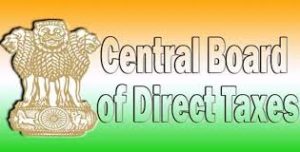 The top 1 per cent of earning individuals who filed tax returns earned about 18 per cent of the total income in financial year 2011-12, according to the latest data on income tax released by the income-tax department recently.
The top 1 per cent of earning individuals who filed tax returns earned about 18 per cent of the total income in financial year 2011-12, according to the latest data on income tax released by the income-tax department recently.
The bottom half of the earning individuals earned just about 21 per cent of the total income shown in the returns, the data showed, highlighting stark income inequality. However, in between there is a big chunk of middle class. It is this class, which was addressed by Prime Minister Narendra Modi in his Independence-Day speech when he said he would further mitigate their problems with the income-tax department. The top 1 per cent of the individuals were those who earned Rs 25 lakh and above, while the bottom 50 per cent made up of those who earned up to Rs 2.5 lakh. In between, there was a middle class, constituting about 49 per cent of the total tax payees. Their income was around 61 per cent of the total.
Three individuals filed returns showing income of more than Rs 500 crore in the financial year 2011-12. About 35,616 individuals earned more than Rs 1 crore as taxable income during that year. These individuals made it to the super-rich category, for which an additional surcharge of 10 per cent was introduced in the financial year 2013-14. The super-rich surcharge imposed on taxable income of more than Rs 1 crore, has since then been raised to 15 per cent.
India’s Gini Coefficient, a measure of inequality, stands at 0.38. The higher the coefficient, ranging between zero and one, the higher is inequality. However, it should be noted that agriculture income is exempted from income tax.
As many as 1,33,000 individuals reported zero taxable income in 2011-12. Maximum individuals or about 38 per cent individual return filers (10.8 million individuals) were in the taxable income bracket of Rs 1.5-2.5 lakh.
About 33 per cent of the 46.5 million taxpayers in the country paid taxes but did not file returns in assessment year 2012-13.
For individuals, salary income constituted about half the total income, while business income represented 33.4 per cent. Of the 31.2 million returns filed, 28.9 million or 92 per cent were individual taxpayers.
Amid pressure from celebrated economist Thomas Piketty and Chief Economic Advisor Arvind Subramanian, the revenue department has released the revised set of income tax data for assessment year 2012-13, omitting about 150,000 returns to bring consistency of data within various categories. In cases where more than one returns were submitted, the values of the latest returns have been considered.
Income tax deductions totalling Rs 1.35 lakh crore significantly lowered taxable income of individuals, making up for 11 per cent of total gross income for individuals. For companies, the deductions were about 7.1 per cent of total gross income.
According to a recent write up by Revenue Secretary Hasmukh Adhia and CEA Subramanian, the total tax foregone on all income taxes amounted to 0.4 per cent of gross domestic product in 2011-12. The government had in the Budget announced a plan to phase out corporate tax deductions and exemptions, putting a sunset date in most cases. It plans to reduce corporate tax to 25 per cent from 30 per cent currently by 2019.
With the government taking efforts to encourage individuals to file returns, about 155,000 filed zero-income returns in 2011-12. Filing of returns is mandatory to avail loans.
About 3.7 per cent of the population and 9.1 per cent of the workforce were part of the individual income-tax system the assessment year 2012-13. There were 44 million individual income taxpayers and 0.65 million corporate taxpayers that year. These include those tax payers also who did not file returns but paid tax through tax deducted at source (TDS).
Source: http://www.business-standard.com/article/economy-policy/i-t-returns-top-1-earned-18-of-income-116081601347_1.html





